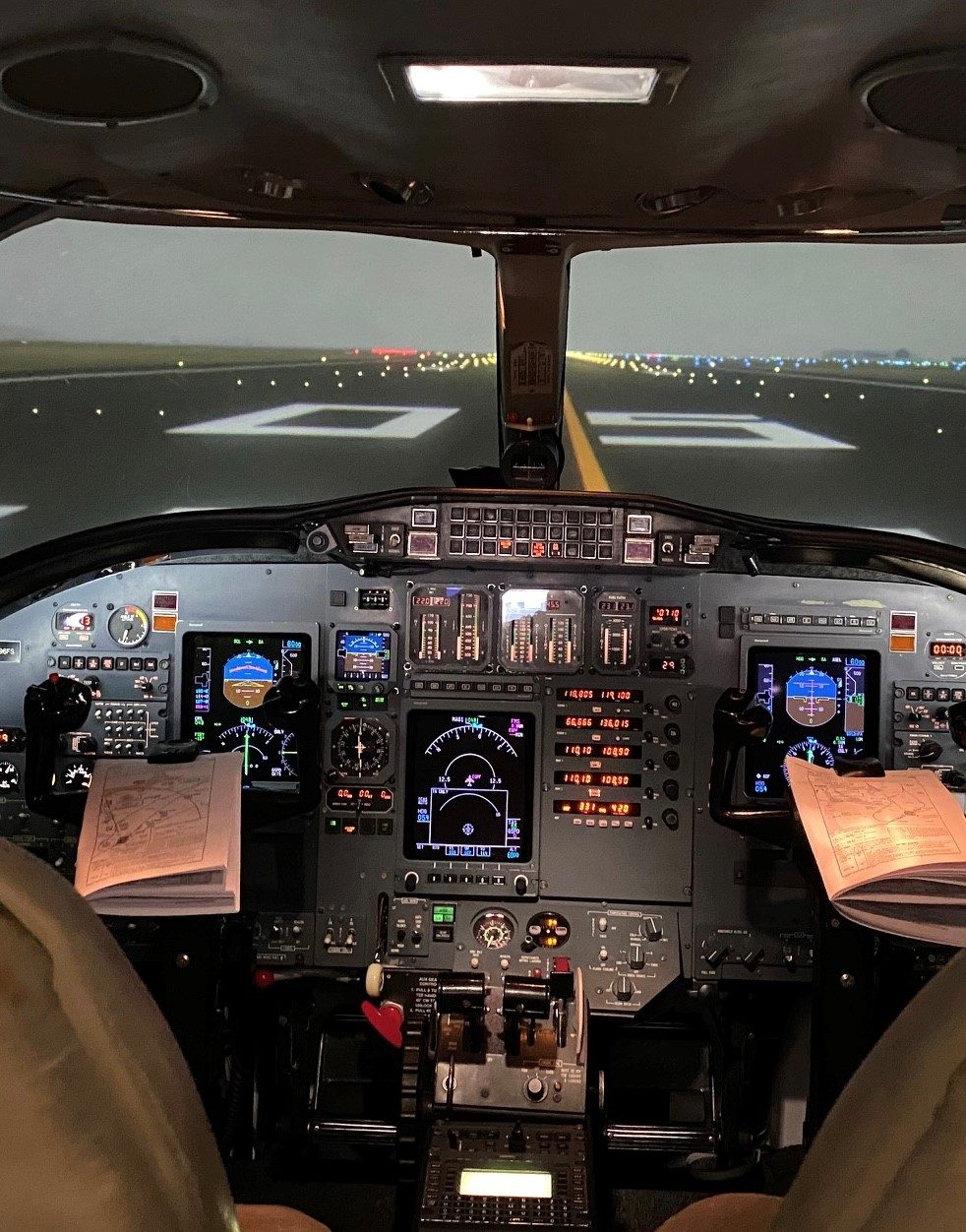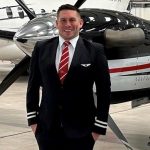Training a Regency Jet pilot
Chief Pilot, Captain Peter Hamlet explains:
“Everyone knows that the pilots who are flying our jets have to be trained but just how much training is involved? The answer is rather a lot.
Even pilots who have already worked for airlines or other private jet operators will have to undergo a large amount of conversion training before being allowed to fly the line for Regency Jet (aviation speak for flying passengers).
All our captains bring a wealth of experience and expertise to our company, all of them have several thousand hours and we even have an ex-military test pilot in our midst. This is important because the work we do is more varied than scheduled airline work and requires a different skill set. I feel the work is much more rewarding as an occupation but requires real dedication and it is obvious for all to see that for our crew it is more of a vocation than a job.
So, what happens when we first take on a new pilot? Firstly, they do a company induction course which includes company procedures, and policies, and this is also the time where we introduce the importance of the passenger experience and what we expect from a Regency Jet pilot.
This is normally followed by a very intensive type rating course at our training provider FlightSafety International, a world-renowned aviation training company training commercial, business, government and military pilots. For the Bravo we train at the facility in Farnborough but for the King Air the crew have to travel to Wichita in the U.S.A.
This course teaches the pilot the differences in the new type of aircraft they are now operating. A common misconception is that a pilot can fly any aircraft, but this only applies to the most simple single engine aircraft. For example, if an airline pilot flies a Boeing 737, he wouldn’t be able to fly a 747 (Jumbo Jet) without extra training.
The type rating course starts with ground school where every system on the aircraft is studied in-depth, anything from the intricacies of the electrical system to something as simple as the tyre pressures. With tyre pressures well over 100 psi compared to probably around 30 psi in your car even that will be important. This knowledge is then tested with a very thorough written exam at the end.
The type rating then advances to the simulator. The simulator looks and feels inside just like the real aircraft. Once the door closes and the drawbridge is pulled up and the device is on motion you feel like you are flying. Each simulator detail lasts for a couple of hours and that time is always packed with a wide variety of problems that you hope you won’t ever come across in the aircraft but if you do you are fully prepared. After completing many sessions like this during training you notice how easy and calm it all is when you fly the real aircraft.
After the simulator training and final test, the pilot returns to Regency Jet and completes their first take-offs and landings in the real aircraft with just a company Instructor on board and an empty aircraft. We have our own inhouse type rating instructors and examiners for all the types we fly which is unusual for a company of our size but allows us to maintain the highest training standards.
The pilot will also have to undergo a wide variety of other courses if they are not already complete including firefighting actual fires using the type of extinguishers carried onboard. The crew are also trained in first aid which is a good skill for daily life and which we all hope we never have to use. When it comes to health, we also have to have rigorous medicals every 12 months so all of us tend to have some sort of fitness routine.
There are also several other specialist courses either online or in the classroom which have to be completed before a new Regency pilot is allowed to take passengers for the first time. One of the courses is Crew Resource Management (CRM) which is about learning the lessons from the past and the effective use of all available resources to assure a safe and efficient operation. Finally, even after all this training. the first flights with passengers will only be with a line training captain who is very experienced on type until the pilot is approved for normal line operations.
All the training is renewed regularly and is tailored to our operation. All crew undergo six monthly flight checks and the recurrent training in the simulator ensures that our passengers can sit back safe in the knowledge that our crew have the skills, knowledge and experience to keep you safe.”



